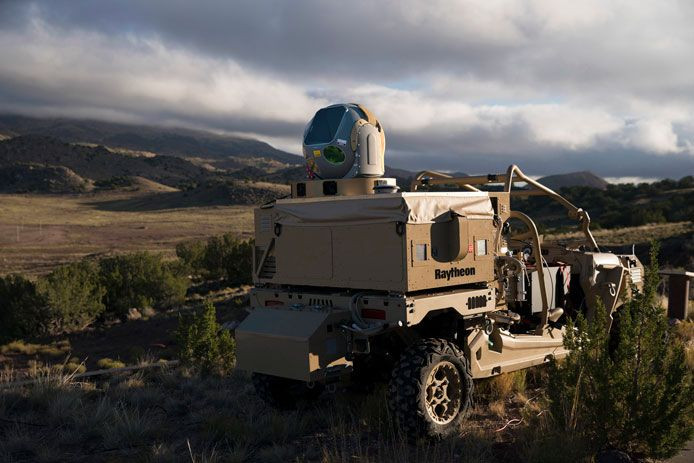China Claims Innovative Breakthrough For Missiles To Tackle Laser Defense
KEY POINTS
- Laser-based weapons technology has offered defense against heating-seeking missiles
- Intense laser glare on the homing missile's infrared sensor can cause it to lose its target
- Coating developed by Chinese researchers can effectively block laser beams
Chinese researchers claim to have achieved an innovative breakthrough in developing a material that can prevent laser defense systems from blinding infrared sensors of missiles.
Professor Lu Yuan and his team at China's National University of Defense Technology in Hefei claim to have created a new transparent coating material using the chemical substance vanadium.
When applied to the lens of infrared sensors of homing missiles, the coating can effectively block laser beams, according to a report in South China Morning Post (SCMP) on Thursday.
While the idea of using vanadium in laser-proofing technology is not a new one, what makes the breakthrough innovative is that the researchers were able to control the temperature of the coating film in a way to ensure a timely response to a laser threat.
The development of laser-based weapons technology has offered an extra layer of defense against heating-seeking missiles. According to a 2019 report in The War Zone, the U.S. Army has equipped helicopters with the technology, such as the new Common Infrared Countermeasures (CIRCM) system, which is designed to counter and deflect short-range heat-seeking missiles with laser beams.
Even though these laser-based defense systems may not be capable of destroying the missile itself, the SCMP report points out that a large and intense laser glare on the homing missile's infrared sensor can cause it to lose its target.
While the technique of coating missile sensors with laser-proof material has been in use for a long, the SCMP report highlights that most of them work only within a narrow range of laser wavelength.
Adding multiple layers of different coatings, such as ceramic, can help efficiently absorb a laser beam's energy; however, it also reduces the detection range and accuracy of the missile's sensor.
It is here that the coating material developed by Lu's team is innovative. With the use of vanadium, a silver-like metal, the Chinese research team has developed a coating film that when heated transitions from transparent and semi-conductive to light-blocking and metallic.
"This phase-change property can protect infrared thermal imaging systems from laser interference," Lu's team said in a paper published on Tuesday in the peer-reviewed Journal of Electronic Measurement and Instrumentation.
Although similar prototypes using vanadium coatings have been developed by others in the past, however, the phase change was slow and unreliable as the temperature was controlled by an external heat source.
To overcome this challenge, the Chinese researchers created a thin film of vanadium over a composite made of gallium nitride. Gallium nitride is a high-performance semiconductor material used in 5G smartphones and other consumer electronics. It helped the researchers to precisely control the vanadium film's temperature, ensuring a quick response to a laser threat.
Based on laboratory experiments, the researchers claim that the coating film could divert 90% of the laser's energy, reducing the blinding glare on the missile sensor to a small bright spot.
"Although this energy still partially saturates the thermal imager, the saturation area is small and the thermal imager can still perform effective imaging observation of the target area," the SCMP quoted the research paper as saying.
As the arms race between China and the West intensifies, the rapid development of laser weapon technology is posing new challenges for missile sensors. Reducing the size of the glare is just the first step in foiling laser defense systems, the Chinese researchers point out.

© Copyright IBTimes 2024. All rights reserved.






















